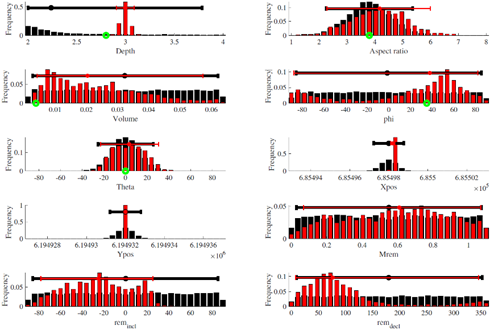In addition, unreliable estimates e.g. of volume (volume of steel), shape, position and depth of UXO increase the risk of uncontrolled explosions during clearance, which lead to increased costs due to excessive and often unnecessary safety precautions. By adopting advance inversion and data interpretation methods, we intend to optimize any UXO excavation survey in land and marine environment
When solving a highly non-linear and non-unique problem in a deterministic inversion framework, it may result in very misleading solutions if care is not taken, or it might produce only a minor insight into the full solution.
Thus, we have approached this problem in a probabilistic inversion framework, where the full solution can be sampled using Markov chain Monte Carlo (MCMC) simulation. In a probabilistic approach, we treat every model parameter as a distribution of believed possible outcomes, enabling us to incorporate complex a priori information, which can then be quantified with regards to the data at hand by MCMC sampling.
The main objective of this PhD project is to create a Python-based software package that can handle large survey data sets in order to identify and characterize potential UXO targets and efficiently interpret the measured anomalies by assigning a given probability of (i) it being a non-UXO (metal trash) or - if being an UXO - then (ii) its size, shape and position.

Figure: Black distribution shows the a priori model of all parameters in the inversion, while the red indicates the solution to the data (posterior distribution) that has been sampled using McMC. The green dot indicates the reference model used to create the synthetic data example. 10 model parameters are used to reproduce the magnetic signature; These are given by position: (depth, Xpos, Ypos), Size : Volume of steel, Shape : Aspect ratio (length/width of bomb), orientation of UXO in space : (Theta,Phi) and remanent magnetization (Mrem, Rem_decl, Rem_incl)
Main supervisor:
Arne Døssing Andreasen (DTU Space)
Co- supervisor:
Thomas Mejer Hansen (Geoscience, Århus university)
Nils Olsen (DTU Space)
Ørsted A/S
Ordtek Ltd.